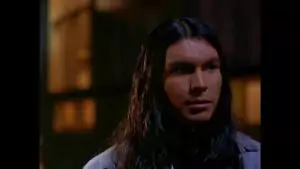By Mark Carrigan

✅ AI Essay Writer ✅ AI Detector ✅ Plagchecker ✅ Paraphraser
✅ Summarizer ✅ Citation Generator
This film tells the story of Harry Brown, a pensioner living on a decaying housing estate in South London. Formerly a marine, Harry now lives a lonely life, with his wife on death’s door in a hospital and few friends in an area increasingly plagued by drugs and crime. The film tells the story of Harry’s stand against the anarchy he perceives around him and the events that forced him to take action. While his friend Len lives in a state of constant fear unknown to Harry, he himself is not immune to it. Time after time, fear of the ‘hoodies’ in the subway by his estate forces him into taking the long route over the dual carriageway. Over and over again, the film bombards the viewer with this message that we live in a broken society where the criminal leave the law-abiding at best inconvenienced and disgusted, at worst terrified and broken. At times, it is difficult not to wonder if the film was produced in alliance with the Conservative Research Department given its continual graphic illustration of the Tory ‘Broken Britain’ theme.
In spite of my distaste for its implicit politics, there is something I found oddly compelling about this film. Perhaps even more so than, say, The Wire because this film possesses a hyperbolic and compulsive grittiness which something like The Wire is simply too refined to exhibit. It is a striking example of what philosopher Mark Fisher calls the ‘machismo of demythologisation’. The film makes a virtue of its own unflinching engagement with social decay and, in doing so, it becomes a caricature of the social realism it purports to embody. The scene where Harry visits a local criminal to buy a gun is the most egregious example of this. Leaving aside the implausibility of the interaction itself (would these large-scale criminals be willing to immediately bring a stranger from the street into their cannabis factory to sell him a weapon?) it is an enormously powerful scene replete with the sort of grinding tension that leaves the viewer increasingly unnerved. Yet, the drug dealer himself is absurd, almost Gollum-like, in his affectations and sheer weirdness. It should detract from the scene, and yet, somehow it does not.
Harry Brown has enjoyed its fair share of liberal critics, as its blatant disregard for any notion of social causation means that it ignores the ‘why’ questions about the apparent evil it portrays. It never asks why the young people in the film act this way. However, I would suggest such a criticism misses the point. I think the more pertinent question is why so many people find a film like this compelling. After all, it won a significant, though modest, degree of critical acclaim. Perhaps more importantly, though, is that it enjoyed positive review after positive review on the usually rather polarised Internet Movie Data Base (IMDB). It is difficult to avoid the conclusion that the gritty ultra-violent and moralising revenge ethos of this film speaks to a significant number of people (at least those moved to write online reviews). I certainly found it a gripping film, and yet feel unsettled by this.
In a sense, Harry Brown is a postmodern moral fable. It is compelling simply because it speaks to a pervasive moral experience within contemporary society, albeit one founded on tabloid scaremongering, political rhetoric, and the aesthetic of social decay rather than any day-to-day reality. Perhaps the most telling scene comes when the well meaning, though socially aloof, female detective notices Harry’s gun and has her suspicions of his vigilantism confirmed. As a riot rages on the estate around them (with the unfeasibly neat counterposition of the riot police and black-clad rioters being the one weak point in the film’s otherwise accomplished cinematography) the defining exchange of the film takes place within the local pub. Having previously been told that Harry served in Northern Ireland, she implores that ‘It’s not Northern Ireland, Harry’. He retorts that ‘No, it’s not… those people were fighting for something. For a cause. To them out there, this is just entertainment’.
Could there be a more emphatic statement of postmodern decay? Whereas once his drive to follow orders and obey the law led him to fight men who believed in something, now when that law has betrayed him (the ineffectualness of the police and judicial system is portrayed through the film with an incongruous degree of subtlety) he is forced to struggle against teenagers who believe in nothing. Yet, he himself is equally diminished by these circumstances: while their world burns around them, good men are forced into violence for their survival (or at the very least, their freedom to use the local subway).
The detective then asks pointedly asks Harry, ‘Where does it end?’ In this sense, she could be taken as the voice of reason within the film. Yet, her character is stilted, aloof, and unsympathetic. Furthermore, she has been cast out from the preferred role in the police as a result of her perceived awkward ways. This incisive question and her moral example suggests that the only way to abate this moral decline (which Harry’s actions only further) is to take a personal stand. Yet, in and of herself, this stand seems worthless, valueless, and unattractive. At the end of it all, she wins a medal but loses any possibility of closure or resolution, as the film implies (though interestingly never states) that her conscience left her unable to arrest this gun-toting pensioner. Her stand is a largely subjective affair, lacking in efficacy beyond her own sense of righteousness.
In fact, the only person in the film who enjoys a moral victory is Harry himself. After all he has been through and all he has done, the film closes with him striding confidently through the subway near his estate, for the first time free from the fear of the attack. Why bother with woolly-minded limp-wristed reformism? If the film is to be believed, all it takes for the ‘silent majority’ to win is a gun, some barbed wire, and a whole series of extra-judicial killings.
—————–
Written under a Creative Commons License, with edits: https://creativecommons.org/licenses/by/1.0/
Follow us on Reddit for more insights and updates.




Comments (0)
Welcome to A*Help comments!
We’re all about debate and discussion at A*Help.
We value the diverse opinions of users, so you may find points of view that you don’t agree with. And that’s cool. However, there are certain things we’re not OK with: attempts to manipulate our data in any way, for example, or the posting of discriminative, offensive, hateful, or disparaging material.